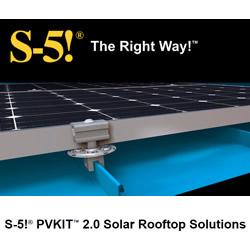Much is made these days of attaching the word green to products and/or buildings as a means of promoting a product or building in the market place even though the greenness or sustainability may be tenuous at best. I believe it is timely to make clear and to discriminate as to just exactly what do we really mean when we refer to a building as being green as well what kind of green are we referring to. We are all not talking about the same green therefore I wish to examine what I see as the main categories of green.
The Many Faces of Green in Architecture
Henry Yorke Mann | Henry Yorke Mann Architect
Techno Green
This is the green that is most common in the architectural magazines and the media and in the various point systems.
Where this approach breaks down is in the use of many of the new chemicals and industrial products that have in their manufacturing a number of injurious effects on the environment as well contributing to ill health of the inhabitants of the buildings. Most industrial products require transportation over long distances requiring oil which is non renewable. The use of plastics (non renewable oil) is also heavily used in many of the new techno devises and applications.
Common Sense Green
The most significant aspect towards the sustainability of our endeavors in this regard is to reduce our impact on the environment by reducing our total footprint (not building larger spaces than we really need utilizing sensible and logical planning) and by building to last.
In this category of Common Sense Green I would include two sub categories.
Natural Green and Local Green (the 100 mile structure)
Natural Green
Natural Green is the use of natural materials and natural techniques. Natural materials are most often sustainable and renewable. (wood in its most elementary form is a classic example) (wood in its form as wood chips in a matrix of glue or plastic is not)
Natural techniques would include the use of buildings that breathe, wherein the building envelope is air transfusive. This avoids the build up of toxins and the so-called “sick home syndrome”. The use of mechanical/electrical ventilation for air to breathe is not a natural technique.
Local green, or what I also refer to as the “100 mile structure”, is the sourcing as much as possible, materials and labour within 100 miles or less. This lessens the utilization of the oil of transportation.
Spiritual Green
This quite simply is the combining of common sense green with the overriding human importance of an architecture that will enhance and exalt our soul. So much of what is touted as a green building currently is as dull as dishwater with little sense of architectural structure. These buildings (modern and green) with their bland surfaces, lack of warmth and humanity leave our souls unsatisfied.
Much better for us to have “Timeless Architecture of the Human Spirit” The architectural historian/writer Robert McAllister has written, “(endeavor) to make present the ancient understanding of building as a sacred act and buildings as sacred places”
Henry Yorke Mann is the son of a master builder, grandson of a master builder and a graduate of the University of Oregon School of Architecture. Own architectural practice established in 1962.
The content & opinions in this article are the authorās and do not necessarily represent the views of AltEnergyMag
Comments (0)
This post does not have any comments. Be the first to leave a comment below.
Featured Product

